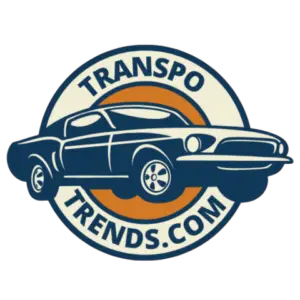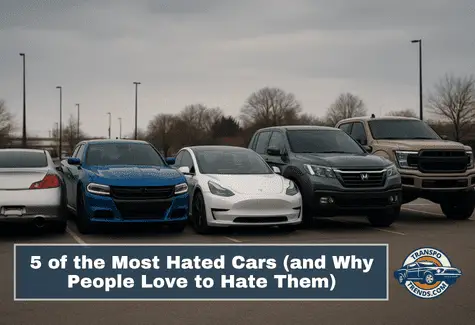In the world of cars, some models carry a reputation that goes far beyond performance specs or reliability ratings. Certain vehicles trigger strong opinions, sparking either admiration or outright disdain.
Whether it is the behavior of their drivers, questionable design choices, or cultural associations, these cars have found themselves at the center of heated debates in parking lots, online forums, and car meets.
If you drive one of these, you may already know the sideways glances you get at traffic lights. If you are thinking about buying one, understanding the reputation that comes with it might save you from some unexpected judgment.
Let us break down five of the most hated cars and trucks in America, and explore why they stir such strong emotions.
1. Infiniti and Nissan with Loud Aftermarket Exhausts
There is a certain sound you can hear from three blocks away: a deep, droning exhaust note followed by sharp, attention-grabbing revs. Often, it comes from modified Infiniti G-series sedans or Nissan 350Zs and 370Zs.
These cars, when stock, can be stylish and enjoyable to drive. However, when owners install oversized aftermarket exhaust systems without proper tuning, the noise often overshadows the car’s performance.
The reputation problem stems from behavior, not just the sound. The stereotype paints the driver as a young enthusiast who enjoys revving the engine in parking garages, blasting down neighborhood streets at night, and generally seeking attention rather than appreciating the car’s capabilities.
The aftermarket exhaust trend is not unique to Nissan or Infiniti — many car brands have their share of loud enthusiasts — but these two marques get singled out frequently in online discussions and videos.
For people living in urban areas, where noise ordinances are becoming stricter, these cars are seen as a public nuisance.
2. Dodge Charger (Non-Hellcat Models)
The Dodge Charger is an iconic American sedan — muscular, aggressive, and deeply tied to the brand’s performance heritage. But somewhere along the way, it became infamous in certain circles, especially non-Hellcat models.
The hate is not for the car itself, but for what happens at car meets and on public roads. Chargers, often Scat Packs or R/T trims, have been associated with drivers performing burnouts, drifting in intersections, or weaving dangerously through traffic. Social media is filled with clips of Chargers sliding into curbs or causing chaos at “takeover” events.
Law enforcement agencies in cities like Atlanta, Houston, and Los Angeles have repeatedly cited Dodge Chargers among the most common vehicles involved in street racing crackdowns.
3. Tesla Model 3
Tesla’s Model 3 was supposed to democratize electric performance, and in many ways, it succeeded. It is one of the best-selling EVs globally and a key player in shifting the auto industry toward electrification. So why is it on this list?
It is less about the car’s engineering and more about public perception of Tesla owners. Critics accuse Model 3 drivers of smugness, tech obsession, or aggressive driving while using Autopilot. Others simply dislike the minimalist interior design or the brand’s polarizing CEO, Elon Musk.
Then there is the electric vehicle culture war. Some people see EV adoption as a moral or political statement, and Tesla often becomes the lightning rod for that debate. Online forums and comment sections are filled with arguments over whether Tesla drivers are “true car enthusiasts” or just “tech bros.”
Despite the hate, the Model 3 has earned strong safety ratings and impressive performance specs, especially in the Performance trim. Yet, like the Prius before it, the Model 3 has become a cultural symbol that people either champion or criticize.
4. Honda Ridgeline
The Honda Ridgeline is not a bad truck by objective measures. It offers a smooth ride, excellent fuel economy for its class, and Honda’s legendary reliability. Yet it has been the target of jokes in the truck world since its debut.
The criticism comes from its unibody construction. Unlike traditional body-on-frame pickups, the Ridgeline shares its platform with the Honda Pilot SUV. This design limits its towing and hauling capacity compared to full-size trucks, leading purists to dismiss it as a “truck for people who do not need a truck.”
5. Squatted Trucks
Finally, we arrive at a category rather than a single model: squatted trucks. This controversial modification involves lifting the front suspension while leaving the rear lower, giving the truck a “nose-up” stance. It originated in off-road racing, where a forward rake helped with certain jumps, but on the street, it has become a divisive trend.
The problem is twofold: visibility and handling. A squatted truck drastically reduces the driver’s view of the road ahead and can throw off suspension geometry, affecting braking and steering stability. In some states, such as North Carolina and South Carolina, laws have been passed to ban or limit extreme squat modifications for safety reasons.
Summary Table: Why These Cars Are Hated
| Car/Type | Main Reason for Hate | Stereotype | Reality Check |
|---|---|---|---|
| Infiniti/Nissan with Loud Exhausts | Excessive noise, attention-seeking behavior | Young, reckless driver revving for attention | Proper exhaust mods can be tasteful and improve performance |
| Dodge Charger (Non-Hellcat) | Reckless driving at meets, weaving through traffic | Street takeover participant | Solid sedan when driven responsibly |
| Tesla Model 3 | Perceived driver arrogance, EV culture wars | Tech-obsessed, smug driver | Efficient, safe daily driver with strong performance |
| Honda Ridgeline | “Not a real truck” due to unibody build | Suburban homeowner with light hauling needs | Comfortable, practical for everyday use |
| Squatted Trucks | Reduced visibility, unsafe handling | Style-over-substance modifier | Potentially dangerous mod banned in some states |

